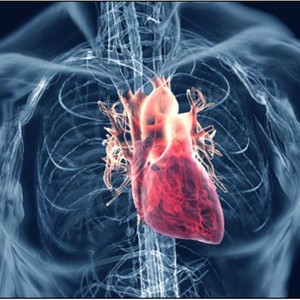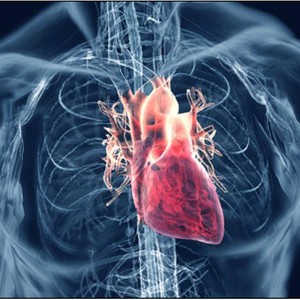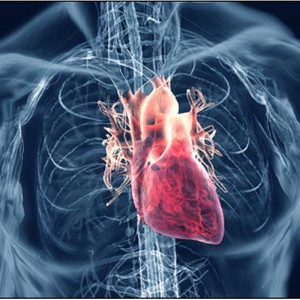Vascular program
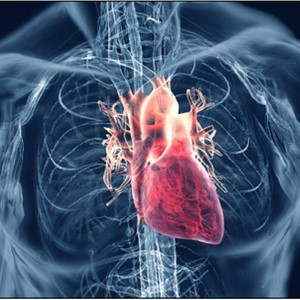 16:00 - 17:30Abstract session I: CAROTID I
16:00 - 17:30Abstract session I: CAROTID I 1. Shunting during carotid endarterectomy: Is it safe? Lessons learned from diffusion-weighted magnetic resonance imaging, P. Lerut (Belgium)
2. The feasibility of surgical treatment in patients with type II internal carotid artery occlusion, S. Babic (Serbia)
3. The immediate and intermediate results of staged carotid endarterectomy and coronary artery bypass grafting, V. G. Tsoi (Russian Federation)
4. Endovascular treatment of carotid artery disease – experience from Serbian clinical centre, V. Cvetic, (Serbia)
5. Operative repair of extracranial carotid aneurysms based on anatomic types and kinks, M. Sevkovic )Serbia)
6. Coexistence of internal carotid artery stenosis in patients with abdominal aortic aneurysm, M. Vranes Stojimirov (Serbia)
7. Chronic symptomatic internal carotid artery occlusion – conservative, endovascular or surgical treatment, M. Gasparini (Slovenia)
8. MicroNet covered stent in the treatment of vulnerable carotid plaque: short and mid-term results, M. Sponza (Italy)
9. Actual strategy in asymtomatic carotid stenosis: a single centre experience, I. Droc (Romania)
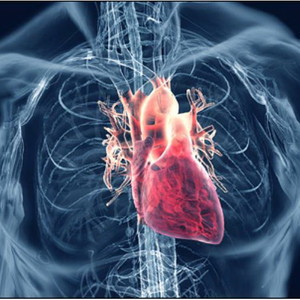 16:00 - 17:30Abstract session II: AORTIC DISEASE I
16:00 - 17:30Abstract session II: AORTIC DISEASE I 1. Thoracic aorta redo surgery: how to do it, M. Cherchi (Italy)
2. Prospective evaluation of post implantation inflammatory response after EVAR for AAA. Influence on patients one-year outcome, G. Kouvelos (Greece)
3. Renal function impairment in patients undergoing evar versus open repair, K. Spanos (Greece)
4. An aggressive strategy of iliac limb deployment may reduce iliac related secondary interventions after EVAR, M. P. Borrelli (Italy)
5. Retrospective endoleak type 1A outcome is independent of endograft sizing methods, V. C. Buijs (Netherlands)
6. The petticoat technique using the e-xl endograft in the treatment of acute type b aortic dissection, F. Squizzato (Italy)
7. Early and late failure of EVAR – surgical and endovascular solution, J. Molacek (Czech Republic)
8. Inflammatory abdominal aortic aneurysm - special challenge for surgeons or not?, S. Cvetkovic (Serbia)
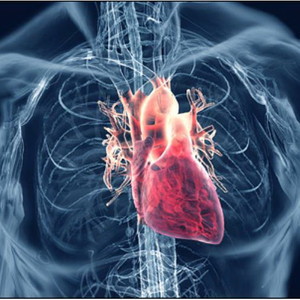 17:45 - 19:00VASCULAR CINEMA I
17:45 - 19:00VASCULAR CINEMA I 4. Early results of simultaneous carotid and vertebral revascularisation, M. Shatakhyan (Armenia)
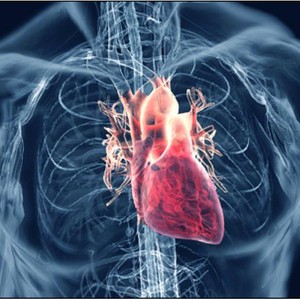 18:00 - 19:30EC meeting
18:00 - 19:30EC meeting Hall: Sava
Vascular program
 08:00 - 09:30Abstract session III: VEINS
08:00 - 09:30Abstract session III: VEINS 1. Chronic venous insuffiency and subsequent adverse cardiovascular event, P. Bondarenko (Russian Federation)
2. Elevated gamma glutamyl transferase levels are associated with the location of acute pulmonary embolism. Cross-sectional evaluation in hospital setting, Ö. Korkmaz (Turkey)
3. Effects of rosuvastatin as an adjuvant treatment for deep vein thrombosis, E. M. San Norberto (Spain)
4. Prevention, diagnosis and treatment of venous insufficiency during pregnancy and breastfeeding, M. Kabic Stakic (Serbia)
5. The use of mini-invasive technologies for the treatment, V. Starodubstev (Russian Federation)
6. Duplication of great saphenous vein can change approach during laser ablation, V. Jokovic (Serbia)
7. Cryo Laser and Cryo Sclerotherapy (CLaCS) for the treatment of spider veins and telangiectasias, P. Dragic (Serbia)
8. Endovascular treatment of varicose veins using steam poulses, I. Droc (Romania)
9. Quality-of-life assessment in patients after endovenous laser therapy and conventional surgery using VCSS (Venous Clinical Severity Score), R. Vlachovsky (Czech Republic)
10. Comparison of three different endovenous ablation techniques for treatment of varicose veins, A. B. Budak (Turkey)
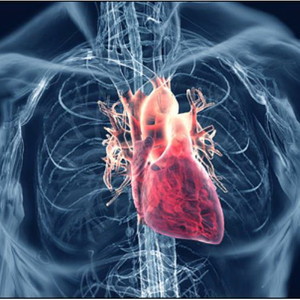 08:00 - 09:30Abstract session IV: CAROTID II
08:00 - 09:30Abstract session IV: CAROTID II Hall:Adriatic
1. Urgent carotid endarterectomy: our opinion, G. Sokurenko (Russian Federation)
2. Treatment of simultaneous carotid disease and intracranial aneurysms, P. Matic (Serbia)
3. Predictive value of morphology of circle of Willis on hyperperfusion syndrome after carotid endarterectomy in asymptomatica patients, V. Manojlovic (Serbia)
4. Relationship between calcification and vulnerability of the carotid plaques, L. Ferrante (Italy)
5. Treatment Strategies for Carotid Artery Aneurysms, I. Koncar (Serbia)
6. Cerebral ischaemia in carotid disease relates to carotid plaque volume, E. Katsogridakis (Greece)
7. Endovascular Therapy in Acute Ischemic Stroke; a Single center experience, V. Gavrilovic (Italy)
8. Significant association between annual hospital volume and the risk of in-hospital stroke or death after carotid endarterectomy, but not following carotid stenting, A. Kuehnl (Germany)
9. Variability of origin of the supra-aortic vessels from the aortic arch, D. Mazzaccaro (Italy)
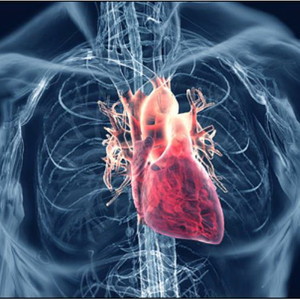 08:00 - 09:30Abstract session V: PERIPHERAL ARTERY DISEASE
08:00 - 09:30Abstract session V: PERIPHERAL ARTERY DISEASE Hall:Aegean
1. Clinico-pathological assessment of vascular lesions in complicated diabetic foot, M. Elsharawi (Saudi Arabia)
2. Bellow-knee bypasses using vein cuffs our results, . Tomic (Serbia)
3. Design of a new risk score in critical limb ischaemia: the ERICVA model, C. Vaquero (Spain)
4. Factors associated with healing process in diabetic patients with foot ulceration and evaluation of quality of life, K. Spanos (Greece)
5. Distinctive peculiarity and influence of a metabolic syndrome on the course of a peripheral arterial disease at women, P. Bondarenko (Russian Federation)
6. Efficacy of dorsalis pedis artery bypass for limb salvage in patients with critical limb ischemia, N. Petrovic (Malta)
7. Diagnostics of early thrombosis in superficial femoral artery prosthetic bypass using the ankle brachial index, V. Markovic (Serbia)
8. Primary aortic stenting in subtotal aortic occlusion: long-term results, T. Cohnert (Austria)
9. Indications and technical aspects of ultradistal bypass surgery, K. Kerin (Slovenia)
10. Panta rhei in vascular surgery: Hybrid procedures in patients with critical lower limb ischemia, M. Gorlitzer (Austria)
11. Clinical outcome of popliteal artery aneurysms treated with a heparin-bonded stent graft, B. Golchehr (Netherlands)
09.30-10.00 Coffee Break
Coffee with SANOFI
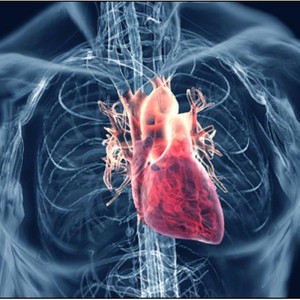 10:00 - 12:30COMMON INTERDISCIPLINARY SESSION
10:00 - 12:30COMMON INTERDISCIPLINARY SESSION 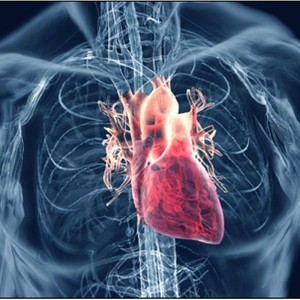 12:30 - 13:00LERICHE LECTURE
12:30 - 13:00LERICHE LECTURE 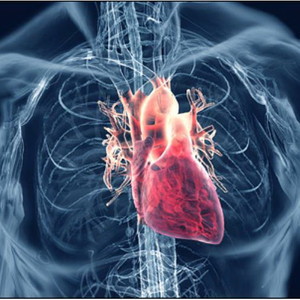 13:00 - 14:00Lunch Symposium: UNESCO Bioehics Issues
13:00 - 14:00Lunch Symposium: UNESCO Bioehics Issues Hall: Pacific
Moderators: D. Palombo (Italy), G. Milasinovic (Serbia)
1. Unesco Book presentation. "Bioethical Issues in Cardiovascular Surgery", D. Palombo (Italy)
2. FFP: Fabication, falsificaton and plagiarism, the three capital sins of scientific research, E. Bucci (Italy)
3. Serbian National commission for collaboration with UNESCO G. Milasinovic (Serbia)
4. Final comments, D. Palombo (Italy)
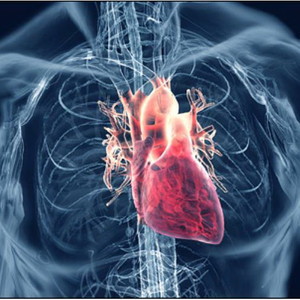 13:00 - 14:00Lunch Symposium: Mechanical thrombectomy
13:00 - 14:00Lunch Symposium: Mechanical thrombectomy Hall: Atlantic I + II
1. Mechanical debulking in arteries of the lower limband its importance in optimisation of endovascular therapy, M. Bulvas (Czech Republic)
2. Successful recanalisation of venous occlusions with Aspirex ® S mechanical thrombectomy, T. Heller (Germany)
3. Live Case: Clinic for Vacular and Endovascular Surgery, M. Bulvas (Czech Republic), I. Koncar (Sebia)
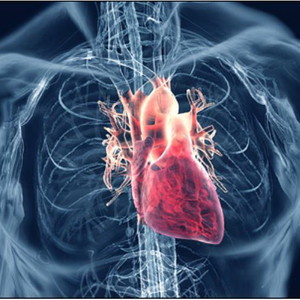 13:00 - 14:00Lunch Symposium: Veins for lunch
13:00 - 14:00Lunch Symposium: Veins for lunch Hall: Aegean + Baltic
Moderators: F. Zernovicky (Slovakia), P. Dragic (Serbia)
1. RF ablation, F. Zernovitsky (Slovakia)
2. Laser ablation, P. Dragic (Serbia)
3. Robotic Glue Implementation: A Paradigm Shift, O. Oto (Turkey)
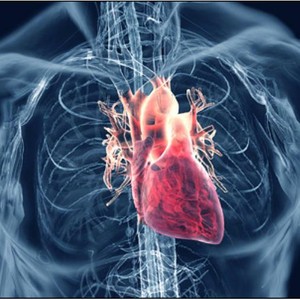 14:00 - 16:00VASCULAR SYMPOSIUM: CAROTID ARTERY DISEASE
14:00 - 16:00VASCULAR SYMPOSIUM: CAROTID ARTERY DISEASE Hall: Atlantic I, II
VOTING
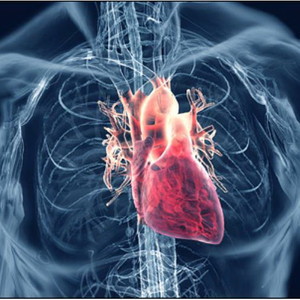 16:30 - 18:00Abstract session VII: TEVAR
16:30 - 18:00Abstract session VII: TEVAR Hall: Aegean
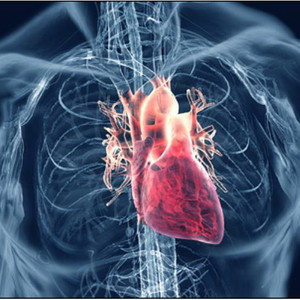 16:30 - 18:30VASCULAR YOUNG AWARD SESSION
16:30 - 18:30VASCULAR YOUNG AWARD SESSION Hall: Pacific
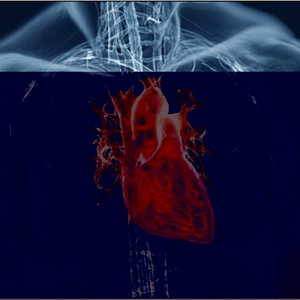 16:30 - 18:30BEST VASCULAR POSTER SESSION
16:30 - 18:30BEST VASCULAR POSTER SESSION Hall: Tisa
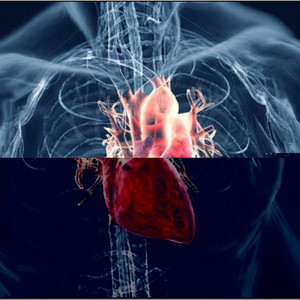 16:30 - 18:00Abstract session VI: MISCELLANEOUS
16:30 - 18:00Abstract session VI: MISCELLANEOUS Hall: Adriatic
Cardiac program
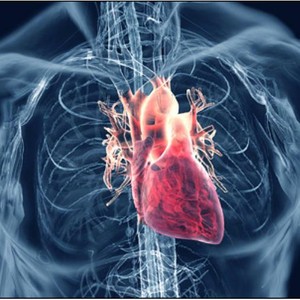 08:00 - 09:30Abstract session II: MITRAL VALVE SURGERY
08:00 - 09:30Abstract session II: MITRAL VALVE SURGERY 1. Preserved posterior valve prevents to embed the catheter during transapical peripreosthetic mitral leakage closure, F. Cingoz (Turkey)
2. Midterm outcomes of chordal cutting in combination with downsized ring annuloplasty for mitral regurgitation, Erkengel (Turkey)
3. Comparative assessment of mitral valve repair with rigid ring and synthetic strip. Whether it is possible to unify procedure?, G. Antipov (Russian Federation)
4. Severe intravascular hemolysis and acute renal failure following a valve replacment, S. Göksel (Turkey)
5. Mitrofix™ Restoration Concept for ischemic mitral valve regurgitation, T. Adademir (Turkey)
6. Starting a robotic mitral valve surgery program: early experience and current knowledge on the topic, N. F. Bayard (France)
7. Early and mid term outcome in patients undergoing redo mitral valve surgery. A single center experience, E. Prifti (Albania)
8. Predictors of hospital mortality in a European multicenter redo mitral surgical experience: inferences for future transcatheter mitral procedures, RECORD Investigators from Italy, Germany, France, UK, Finland
9. Supraanular implantation of mechanical arteficialmitral valve in case of extreme, R. Ilic (Serbia)
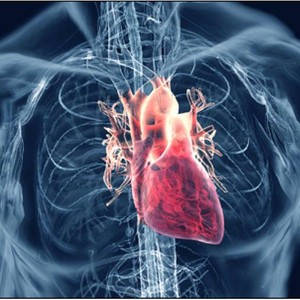 08:00 - 09:30Abstract session I: AORTIC VALVE SURGERY
08:00 - 09:30Abstract session I: AORTIC VALVE SURGERY 1. Technical tips and tricks for the heart valve surgery through a mini-sternotomy approach, P. Kovacevic (Serbia)
2. Predictive factors of 12-year survivalin octogenarians following aortic valve replacement: a retrospective comparison with same-aged general population, F. Terrieri (Italy)
3. Our experiences of aortic valvular reconstruction (carvar technique), M. Djordjevic (Slovenia)
4. Excellent results of minimally invasive aortic valve replacement through j-sternotomy: single-center experience with over 400 cases, M. Kaczmarczyk (Poland)
5. Surgical treatment of poststenotic aneurysms of ascending aortaduring correction of aortic valve disease, V. Popov (Ukraine)
6. Automatic planning and simulation for minimally invasive approach to the aortic valve, V. G. Ruggieri (France)
7. Development of a novel autologous bioprosthesis, J. Takewa (Japan)
8. In which low- or intermediate-risk patient redo-aortic valve surgery is futile? Indications for transcatheter procedures from a multicenter European “record” (redo cardiac operation research database) initiative, F. Onorati (Finland)
9. The development of a new physiological flow chamber for the investigation of artificial aortic valves, D. Dohle (germany)
10. The place for homografts in aortic valve replacement surgery, V. Podpalov (Belarus)
11. Carotid Versus Axillary Artery Cannulation for Acute Aortic Dissection Type, A. Aleksic (Germany)
 08:00 - 09:30Abstract session III: TRANSCATHETER AORTIC VALVE REPLACEMENT
08:00 - 09:30Abstract session III: TRANSCATHETER AORTIC VALVE REPLACEMENT 1. Impact of trans-catheter aortic valve implantation on mitral regurgitation at mid-term follow-up, E. Senanayake (United Kingdom)
2. Does trans-catheter aortic valve implantation improve LV function at short-term follow-up?, E. Senanayake (United Kingdom)
3. Sutureless-AVR versus TAVI: clinical outcome and costs matching, G. Santarpino (Germany)
4. Anesthesia for TAVI, Z. Valuh (Slovakia)
5. Impact of previous coronary artery bypass grafting in patients undergoing transcatheter aortic valve implantation, S. E. Shehada (Germany)
6. Imaging in Transcatheter Aortic Valve Replacement – The role of radiologist, . Petkovic (Serbia)
7. Infectious complications after transcatheter aortic valve implantation or surgical aortic valve replacement, D. Wendt (Germany)
8. Transapical Transcatheter Aortic Valve Implantation in Pure Aortic Regurgitation: Mid-Term Outcomes, D. Wendt (Germany)
9. Access Site Vascular Complicationsin Patients Undergoing Transfemoral Transcatheter Aortic Valve ImplantationVia Open Versus Percutaneous Approaches, R. Walas (Poland)
10. Effect of anti-embolic filter protection on brain injury during transcatheter aortic valve implantation, S. Knipp (Germany)
Coffee with SANOFI
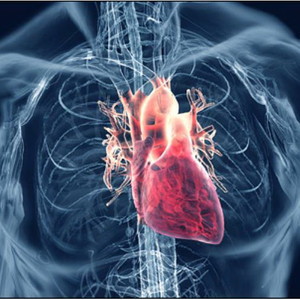 10:00 - 12:30COMMON INTERDISCIPLINARY SESSION
10:00 - 12:30COMMON INTERDISCIPLINARY SESSION Hall: Pacific
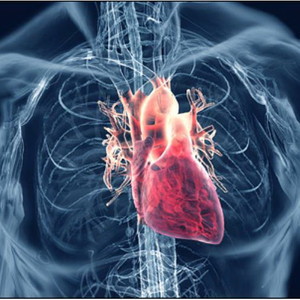 12:30 - 13:00LERICHE LECTURE
12:30 - 13:00LERICHE LECTURE Hall: Pacific
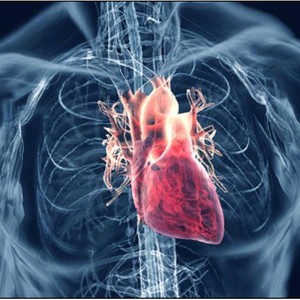 14:00 - 16:00CARDIAC SYMPOSIUM: AORTIC VALVE REPAIR
14:00 - 16:00CARDIAC SYMPOSIUM: AORTIC VALVE REPAIR  14:00 - 16:00CARDIAC SYMPOSIUM: LVAD
14:00 - 16:00CARDIAC SYMPOSIUM: LVAD 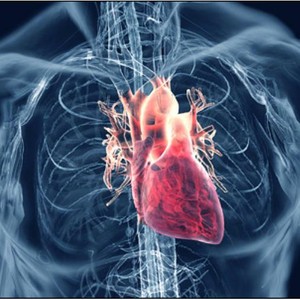 16:30 - 18:00Abstract session IV: HEART TRANSPLANTATION, ECMO and LVAD
16:30 - 18:00Abstract session IV: HEART TRANSPLANTATION, ECMO and LVAD 1. Two-year experience in heart transplant and continuous – flow left ventricular assist device in Serbia, E. Nestorovic (Serbia)
2. Extracorporeal membrane oxygenation as a bridge to definitive cardiac operation in critically ill patients, N. Dobrilovic (USA)
3. Early clinical results for post-approval HeartMate 3 left ventricular assist device implantation – Astana experience, Y. Pya (Kazakhstan)
4. Heart transplantation in University Hospital Dubrava Zagreb: 20 years of experience, M. Planinc (Croatia)
5. Left ventricular assist device-related infection: prevention, treatment and outcome, D. Terzic (Serbia)
6. Retrograde crystaloid cardioplegia for isolated mitral valve replacement, V. Popov (Ukraine)
7. The importance of ventricle and pulmonary mechanical support with IABP and ECMO for a patient bridging to redo coronary bypass surgery, . Gurbuz (TUrkey)
8. Management of upper limb hypoxia in peripheral veno-arterial ECMO, O. Gokalp (Turkey)
9. MDCT imaging of left ventricule assist device, N. Menkovic (Serbia)
10. Extracorporeal membrane oxygenation: experience in primary graft dysfunction after heart transplantation, N. Bradic (Croatia)
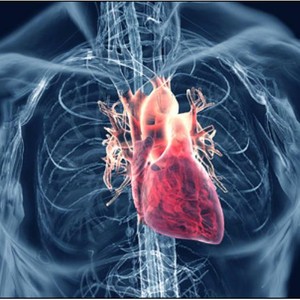 16:30 - 18:00Abstract session V: MISCELANEOUS I
16:30 - 18:00Abstract session V: MISCELANEOUS I 1. Our surgical strategy in a patient with mid-septal obstructive hypertrophic cardiomyopathy and coronary artery disease, L. Yilik (Turkey)
2. Fifteen-year experience in using synthetic patches "basex" for management of post-infarction lv aneurysm of heart, R. Abdulgasanov (Russia)
3. Predictors for hospital readmission after cardiac surgery, . Redzek (Serbia)
4. Comparison of the capacity to predict early mortality in patients undergoing cardiac surgery of the glomerular filtration rate and the new huge formula, J. M. González-Santos (Spain)
5. Topical negative pressure for the treatment of deep sternal wound infection and madiastinitis after cardiac surgery, S. Borovic (Serbia)
6. Surgical management of renal cell carcinoma with invasion of the inferior vena cava and right atrium: case report, B. Aureliu (Moldova)
7. Heart injuries - Emergency surgery and predictors for reintervention, . Batrinac ()
8. Managing Sternal Defects After Cardiovascular Surgery with Free Flaps, S. Theodosiadi (Germany)
9. Dysphagia as a coronary surgery complication, V. Vujic (Serbia)
10. Cardiac surgery in patients with liver cirrhosis: not as simple as expected due to point-by-point increase in mortality, M. Aleksic (Germany)
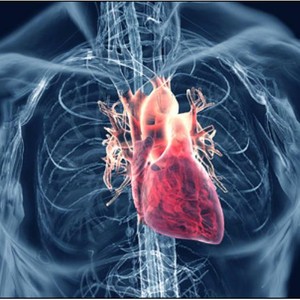 16:30 - 18:30CARDIAC YOUNG SURGEONS’ AWARD SESSION
16:30 - 18:30CARDIAC YOUNG SURGEONS’ AWARD SESSION 1. Postoperative Complications and The Degree of Patients’ Satisfaction After Radial Artery Harvesting for Coronary Artery Bypass, A. Milutinovic (Serbia)
2. Clinical and Echocardiographic Outcomeat Three Years in Patients with Functional Tricuspid Regurgitation comparing Annuloplasty with Rigid Ring, Flexible Ring and De Vega Technique, J. Hernández (Spain)
3. Early results of valve sparing aortic root reconstruction in acute Stanford type A aortic dissection, M. Wahba (Egypt)
4. Systolic Stretching ofthe Ascending Aorta as A New Method of the Assessment of Elasticity of the Aortic Wall, T. Plonek (Poland)
5. Biomechanical Analysis ofthe Ascending Aorta – A Finite Elements Study, T. Plonek (Poland)
6. Combination of Port-Access and Direct Vision in Open Heart Surgery. Initial Three Years Single Center Experience, A. Kurmalayev (Kazakhstan)
7. Innominate vein cannulation: easy but neglected technique, M. Akbulut (Turkey)
8. Comparison of frozen elephant trunk technique according different zone implantation, M. Akbulut (Turkey)
9. Aortic Cryopreserved Allograft Implantation in Reoperations for Active Prosthetic Endocarditis with Aortic Root Destruction, M. Kokoev (Russian Federation)
10. Aortic Cryopreserved Allograft Implantation in Reoperations for Active Prosthetic Endocarditis with Aortic Root Destruction, D. Sef (Croatia)
11. Algisyl-LVR™ ventriculoplasty in Patients with Dilated Cardiomyopathy - the cardiovascular surgeon's perspective, C. A. Buzila (Romania)
12. The Association Between Platelet to Lymphocyte Ratio, Red Cell Distribution Width, Mean Platelet Volume and Postoperative Atrial Fibrillation in Patients Underwent Coronary Artery Bypass Surgery Operation: Can We Predict Postoperative Atrial Fibrillation by Using These Values?, A. Özgür (Turkey)
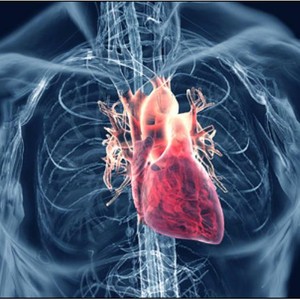 16:30 - 18:30BEST CARDIAC POSTER SESSION
16:30 - 18:30BEST CARDIAC POSTER SESSION Abstract presentations 3+1 min
3. Triangular Plasty ofLeft Atriumfor Atriomegaly During Mitral Valve Replacement, V. Popov (Ukraine)
5. Novel method for ex-vivo preservation of donor heart using blood cardioplegia and the Organ Care System, R. Kaliyev (Kazakhstan)
10. Short-term outcomes of patients undergoing aortic valve replacement after previous coronary artery bypass grafting, L. Velicki (Sebia)
11. Postoperative outcome in patients with bacterial endocarditis undergoing surgery, K. Krakulli (Albania)
12. In Situ Bentall Operation – Good Solution for Reoperative Aortic Surgery, B. Djukanovic (Serbia)
13. Case report: Simultaneous open heart and gynecological surgery, M. Lukic (Serbia)
16. First implantation of the heartmate III left ventricular assist device, M. Kusurin (Croatia)
19. Optimal therapeutic approach in aortic coarctation and associated cardiac lesions-our experience, R. Karan (Serbia)
26. Tubular patch prepared using recipient’s right atrial tissue; a new technique to repair short vena cava inferior, M. Balkanay (Turkey)
Global
08:40 - 12:00Registrations 19:30 - 21:00Opening CeremonyBelgrade National Theatre 19.30-21h
Official protocol of Opening Ceremony:
Welcome Address of the Chairmen of the Local Organizing Committee of the 65th ESCVS Congress, Belgrade 2016
L. Davidovic, Chairman of the Local Organizing Committee of the 65th ESCVS Congress
Welcome Adress of ESCVS President
O. Oto, ESCVS President 2014-2016
Adress of Honorary Guests og the 65th ESCVS Congress
Z. Loncar, Minister of health
V. Bumbasirevic, Rector, University of Belgrade
Adress of ESCVS Secretary General
V. Treska, Escvs Secretary General
Scientific Program Committee Address
T. Ulus, Chairmen Of the Vascular and Endovascular Scientific Program Committee
M. Fabri, Chairmen of the Local Cardiac Scientific Program Committee
I. Koncar, Chairmen of the Local VAscular Scientific Program Committee
Presentation form the Host of the 66th ESCVS Congress
A. Giannoukas, (Thesalloniki, Greece)
CHairmen of the Local Organizing Committee of the 66th ESCVS Congress
20 min intermezzo - Movie Presentation
Ballet
"Who is singing out there", 67 minutes
Vascular program
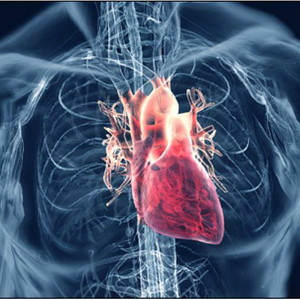 08:00 - 09:30Abstract session VIII: ENDOVASCULAR PROCEDURES
08:00 - 09:30Abstract session VIII: ENDOVASCULAR PROCEDURES Hall: Adriatic
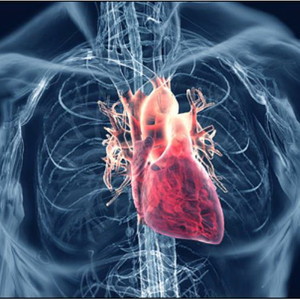 08:00 - 09:30Abstract session IX: RESEARCH
08:00 - 09:30Abstract session IX: RESEARCH Hall: Danube
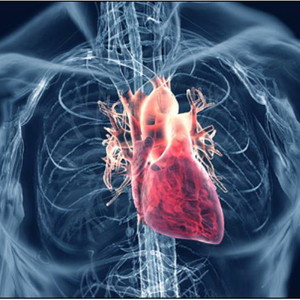 08:00 - 09:30VASCULAR CINEMA II
08:00 - 09:30VASCULAR CINEMA II Hall: Atlantic I
 08:00 - 09:30Abstract session: CARDIOVASCULAR ANESTHESIA & CRITICAL CARE
08:00 - 09:30Abstract session: CARDIOVASCULAR ANESTHESIA & CRITICAL CARE
Hall: Mediterranean
Moderators: M. Jovic (Serbia), G. Voga (Slovenia)
1. Cervical plexus block for carotid endarterectomy: intraoperative hemodynamic stability in patients with different degree of cardiovascular disease, K. Stevanovic (Serbia)
2. Anesthetic challenge in infant presenting with Bland-White-Garland syndrome, B. Mojsic (Serbia)
3. Central venous-to-arterial carbon dioxide difference in cardiac surgical patients, D. Unic Stojanovic (Serbia)
4. Cardio – organoprotection, M. Jovic (Serbia)
5. Implications of acute kidney injury after cardiac surgery: what we should know, M. Filipovic (Serbia)
6. General versus regional anaesthesia for carotid endarterectomy, D. Unic Stojanovic (Serbia)
7. Rotation thromboelastometry in goal-directed treatment of bleeding-case reports, T. Kocica (Serbia)
8. Influence of open surgical and endovascular abdominal aortic aneurysm repair on clot quality assessed by ROTEM® test, M. Sarac (Serbia)
9. Predictors of anesthesia outcome after general noncardiac surgical procedures in neonates with congenital heart disease, M. Stevic (Serbia)
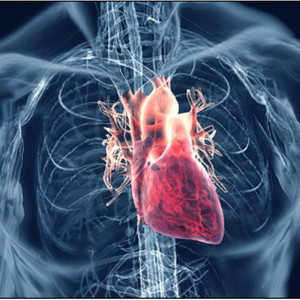 08:00 - 11:00Seminar in Thrombosis and Antithrombotic Therapy
08:00 - 11:00Seminar in Thrombosis and Antithrombotic Therapy Hall: Pacific
Course director: M. Matsagkas (Greece)
Moderators: M. Matsagkas (Greece), I. Banzic (Serbia)
Part A Arterial disease
08.00 – 08.15 Antithrombotic treatment in peripheral arterial interventions G. Kouvelos (Greece)
08.16 – 08.30 Antithrombotic treatment in carotid interventions I. Banzic(Serbia)
08.31 – 08.45 Optimal antithrombotic treatment during cardiac surgery S.Putnik (Serbia)
08.46 – 09.00 Antithrombotic treatment during combined cardiac surgery and carotid intervention M. Matsagkas (Greece)
09.01 – 09.10 Discussion
Part B Venous Thromboembolism
09.11 – 09.20 Pathophysiology of heamostasis and thrombosis N. Roussas (Greece)
09.21 - 09.35 The recently published ESC guidelines for pulmonary embolism - New treatment strategies Vassil Chervenkof (Bulgaria)
09.36 - 09.50 NOACs in the treatment of VTE. Clinical implications M. Matsagkas (Greece)
09.51 – 10.00 Discussion
Part C Peri-operative antithrombotic management
10.01 – 10.40 Managing patients under anti-thombotic therapy to undergo non-cardiac surgery E.Arnaoutoglou (Greece)
10.41 – 10.50. Discussion
Satellite presentation
10.51 - 11.00 HEMOFARM
Acetylsalicylic acid in reducing cardiovascular events D. Kostic (Serbia)
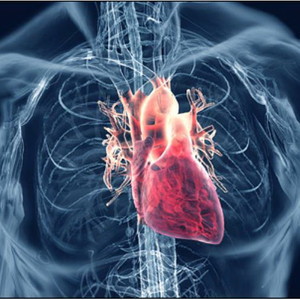 09:00 - 10:45JOINT SESSION WITH ESVS
09:00 - 10:45JOINT SESSION WITH ESVS Hall: Atlantic II
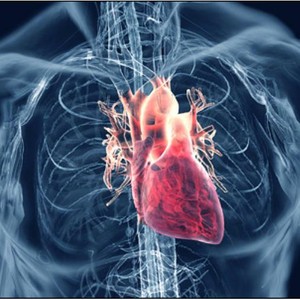 09:45 - 10:45Cardiovascular Cinema
09:45 - 10:45Cardiovascular Cinema 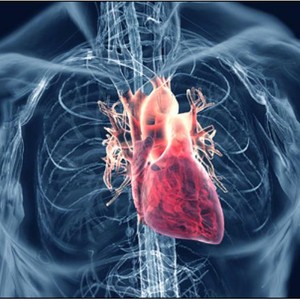 11:00 - 13:00VASCULAR SYMPOSIUM: THORACOABDOMINAL AORTA
11:00 - 13:00VASCULAR SYMPOSIUM: THORACOABDOMINAL AORTA Hall: Atlantic I+II
 13:00 - 14:00Lunch Symposium: VAC THERAPY IN VASCULAR SURGERY
13:00 - 14:00Lunch Symposium: VAC THERAPY IN VASCULAR SURGERY Hall: Aegean + Baltic
Detailed program inserted in the congress bag
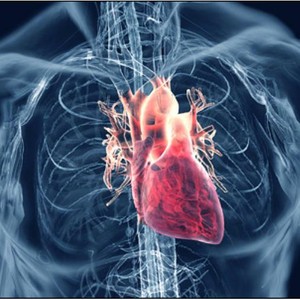 14:00 - 16:00VASCULAR SYMPOSIUM: VASCULAR BIOLOGY AND BIOMEDICAL ENGINEERING
14:00 - 16:00VASCULAR SYMPOSIUM: VASCULAR BIOLOGY AND BIOMEDICAL ENGINEERING Hall: Atlantic I + II
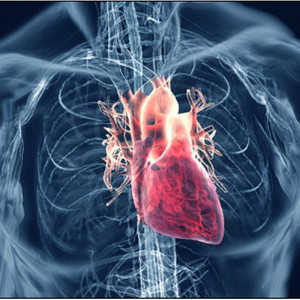 14:00 - 15:00Lunch Sympsium II: Computational Surgery
14:00 - 15:00Lunch Sympsium II: Computational Surgery Hall: Atlantic I+II
Moderators: N. Filipovic (Serbia), M. Garbey (USA)
1. Challenges in vascular adaptation: from observation to control, M. Garbey (USA)
2. Modeling Coronary Artery Disease for decision support in interventional treatment, T. Exarchos (Greece)
3. Modeling if the AAA for surgical intervention, N. Filipovic (Serbia)
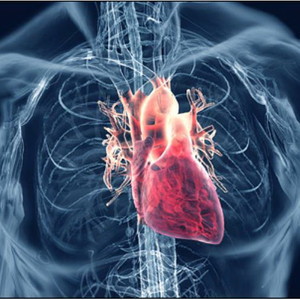 14:00 - 15:00JOINT SESSION WITH SERBIAN SOCIETY FOR HEART FAILURE
14:00 - 15:00JOINT SESSION WITH SERBIAN SOCIETY FOR HEART FAILURE Hall: Baltic & Aegean
Diabetes and heartfailure: pathophysiology, clinical presentation and treatment Moderators: S. Dodic (Serbia), S. Pavlovic (Serbia)
1. Diabetes, heart failure and advanced glycation end products: Clinicaly relevant hidden links? M. Mamas (UK)
2. Dysglicaemia and heart failure phenotypes: clinical presentation and therapeutic implications P. Seferovic (Serbia)
3. Acute coronary syndrome in type 2 diabetes: Optimal clinical and treatment strategies A. Oto (Turkey)
4. Acute heart failure and diabetes: prognostic and therapeutic aspects A. Ristic (Serbia)
5. Antiglycemic drugs in heart failure: friends or foe? Michael Theodorakis (UK)
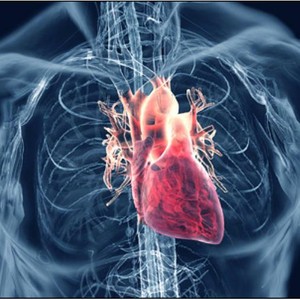 16:30 - 18:00VASCULAR SYMPOSIUM: PERIPHERAL OCCLUSIVE DISEASE
16:30 - 18:00VASCULAR SYMPOSIUM: PERIPHERAL OCCLUSIVE DISEASE Hall Adriatic and Mediterranean
Cardiac program
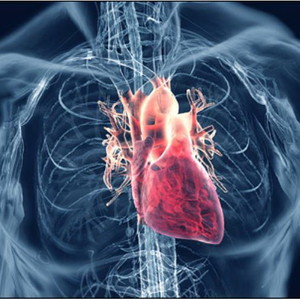 08:00 - 09:30Abstract session VI: ATRIAL FIBRILLATION
08:00 - 09:30Abstract session VI: ATRIAL FIBRILLATION 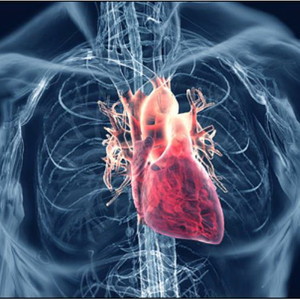 08:00 - 09:30Abstract session VII: CORONARY SURGERY I
08:00 - 09:30Abstract session VII: CORONARY SURGERY I Hall: Aegean
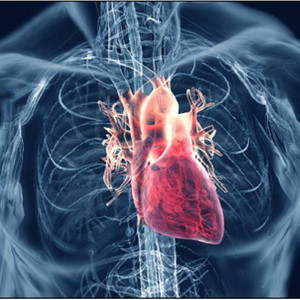 08:00 - 09:30Abstract session: CARDIOVASCULAR ANESTHESIA & CRITICAL CARE
08:00 - 09:30Abstract session: CARDIOVASCULAR ANESTHESIA & CRITICAL CARE
Hall: Mediterranean
Moderators: M. Jovic (Serbia), G. Voga (Slovenia)
1. Cervical plexus block for carotid endarterectomy: intraoperative hemodynamic stability in patients with different degree of cardiovascular disease, K. Stevanovic (Serbia)
2. Anesthetic challenge in infant presenting with Bland-White-Garland syndrome, B. Mojsic (Serbia)
3. Central venous-to-arterial carbon dioxide difference in cardiac surgical patients, D. Unic Stojanovic (Serbia)
4. Cardio – organoprotection, M. Jovic (Serbia)
5. Implications of acute kidney injury after cardiac surgery: what we should know, M. Filipovic (Serbia)
6. General versus regional anaesthesia for carotid endarterectomy, D. Unic Stojanovic (Serbia)
7. Rotation thromboelastometry in goal-directed treatment of bleeding-case reports, T. Kocica (Serbia)
8. Influence of open surgical and endovascular abdominal aortic aneurysm repair on clot quality assessed by ROTEM® test, M. Sarac (Serbia)
9. Predictors of anesthesia outcome after general noncardiac surgical procedures in neonates with congenital heart disease, M. Stevic (Serbia)
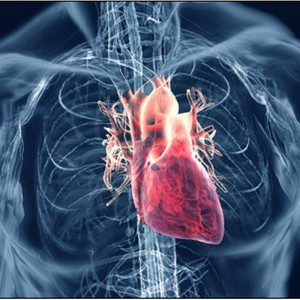 08:00 - 11:00Seminar in Thrombosis and Antithrombotic Therapy
08:00 - 11:00Seminar in Thrombosis and Antithrombotic Therapy Hall: Pacific
Course director: M. Matsagkas (Greece)
Moderators: M. Matsagkas (Greece), I. Banzic (Serbia)
Part A Arterial disease
08.00 – 08.15 Antithrombotic treatment in peripheral arterial interventions G. Kouvelos (Greece)
08.16 – 08.30 Antithrombotic treatment in carotid interventions I. Banzic(Serbia)
08.31 – 08.45 Optimal antithrombotic treatment during cardiac surgery S.Putnik (Serbia)
08.46 – 09.00 Antithrombotic treatment during combined cardiac surgery and carotid intervention M. Matsagkas (Greece)
09.01 – 09.10 Discussion
Part B Venous Thromboembolism
09.11 – 09.20 Pathophysiology of heamostasis and thrombosis N. Roussas (Greece)
09.21 - 09.35 The recently published ESC guidelines for pulmonary embolism - New treatment strategies Vassil Chervenkof (Bulgaria)
09.36 - 09.50 NOACs in the treatment of VTE. Clinical implications M. Matsagkas (Greece)
09.51 – 10.00 Discussion
Part C Peri-operative antithrombotic management
10.01 – 10.40 Managing patients under anti-thombotic therapy to undergo non-cardiac surgery E.Arnaoutoglou (Greece)
10.41 – 10.50. Discussion
Satellite presentation
10.51 - 11.00 HEMOFARM
Acetylsalicylic acid in reducing cardiovascular events D. Kostic (Serbia)
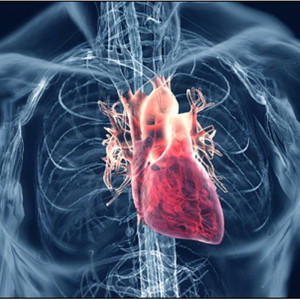 09:45 - 10:45CARDIAC CINEMA
09:45 - 10:45CARDIAC CINEMA Hall: Baltic
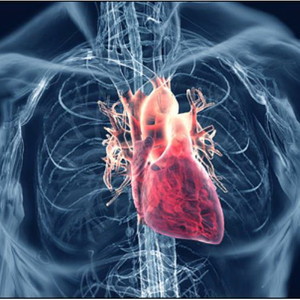 11:00 - 13:00 CARDIAC SYMPOSIUM: COMPLEX CORONARY SURGERY, IS IT OUR FUTURE?
11:00 - 13:00 CARDIAC SYMPOSIUM: COMPLEX CORONARY SURGERY, IS IT OUR FUTURE? Hall: Aegean + Baltic
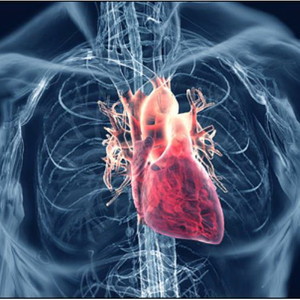 13:00 - 14:00Lunch symposium I TAVI/TMVI
13:00 - 14:00Lunch symposium I TAVI/TMVI 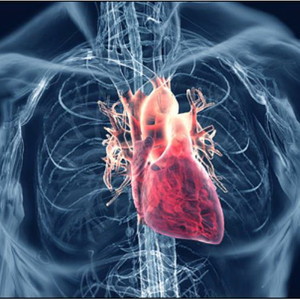 13:00 - 14:00Atricure Lunch Symposium
13:00 - 14:00Atricure Lunch Symposium Hall: Pacific
“Current status and latest developments on Sole/Hybrid AF Ablation”
Moderator: Timo Weimar, MD (Germany)
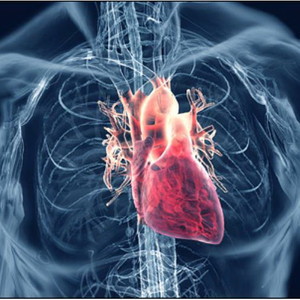 14:00 - 16:00CARDIAC SYMPOSIUM: UPDATE IN ATRIAL FIBRILLATION SURGERY
14:00 - 16:00CARDIAC SYMPOSIUM: UPDATE IN ATRIAL FIBRILLATION SURGERY Hall: Pacific
 14:00 - 16:00JOINT SESSION WITH SERBIAN SOCIETY FOR HEART FAILURE
14:00 - 16:00JOINT SESSION WITH SERBIAN SOCIETY FOR HEART FAILURE Hall: Baltic & Aegean
Diabetes and heartfailure: pathophysiology, clinical presentation and treatment Moderators: S. Dodic (Serbia), S. Pavlovic (Serbia)
1. Diabetes, heart failure and advanced glycation end products: Clinicaly relevant hidden links? M. Mamas (UK)
2. Dysglicaemia and heart failure phenotypes: clinical presentation and therapeutic implications P. Seferovic (Serbia)
3. Acute coronary syndrome in type 2 diabetes: Optimal clinical and treatment strategies A. Oto (Turkey)
4. Acute heart failure and diabetes: prognostic and therapeutic aspects A. Ristic (Serbia)
5. Antiglycemic drugs in heart failure: friends or foe? Michael Theodorakis (UK)
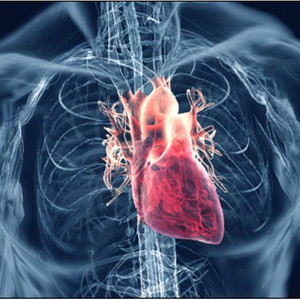 16:30 - 18:00CARDIAC SYMPOSIUM: SUTURELESS AORTIC VALVE
16:30 - 18:00CARDIAC SYMPOSIUM: SUTURELESS AORTIC VALVE Hall: Pacific
Vascular program
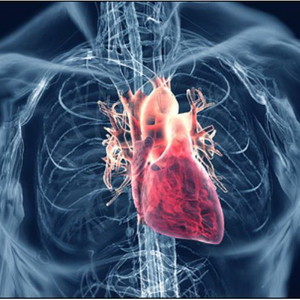 08:30 - 10:30SYMPOSIUM: CARDIOVASCULAR ANESTHESIA & CRITICAL CARE
08:30 - 10:30SYMPOSIUM: CARDIOVASCULAR ANESTHESIA & CRITICAL CARE Hall: Pacific
1. Monitored Anesthesia Care for EVAR: Less is more E. Arnaoutoglou (Greece)
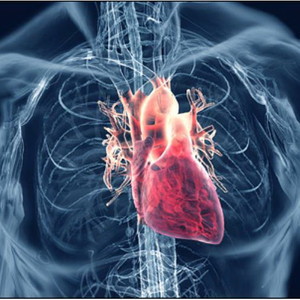 09:00 - 10:30Abstract session X: HEMODIALYSIS
09:00 - 10:30Abstract session X: HEMODIALYSIS Hall: Danube
2. The use of vascular dilators in vascular access procedures for haemodialysis, B. Fila (Croatia)
3. Early AV Fistula Revisions in Chronic Hemodialysis Patients, S.Göksel (Turkey)
4. Dialysis access infection: Impact of prosthetic material on clinical presentation, surgical management and outcomes, M. Z. Ghariani (Tunisia)
5. Results of the surgical management of dialysis access stenoses, M. Z. Ghariani (Tunisia)
6. Rational choice of permanent vascular approach for hemodialysis, I. Kuzmanovic (Serbia)
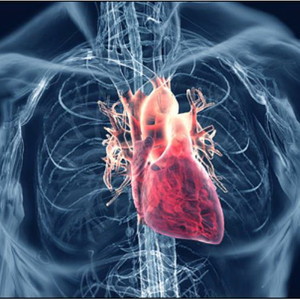 09:00 - 10:30Abstract session XI: EVAR
09:00 - 10:30Abstract session XI: EVAR Hall: Adriatic
Key Note Lecture: Radical management of endograft infection. F. Speziale (Italy)
2. 3D Ultrasound for EVAR surveillance – goal or gimmick?, H. Apfelbeck (Germany)
3. Aneurysmal Sac Glue Embolization in Emergency Endovascular Aneurysm Repair for Ruptured Abdominal Aortic Aneurysm, R. Hosino (Japan)
4. Long-term results for EVAR in women, P. Konstantiniuk (Austria)
5. Pre-operative morphological features predict late distal type I endoleaks, E. Gallitto (Italy)
6. New single-sided access evar device: the horizon ce pivotal study– short-term results, I. Banzic (Serbia)
7. Gender specific analysis of a low-profile EVAR device, T. Nolte (Germany)
8. Hybrid theatre with image fusion for endovascular aortic aneurysm repair, T. Somacescu (United Kingdom)
9. Off-the-shelf stent grafts implantations as the solution for treatment of some aorta and iliac artery aneurysms, M. Nowacki (Poland)
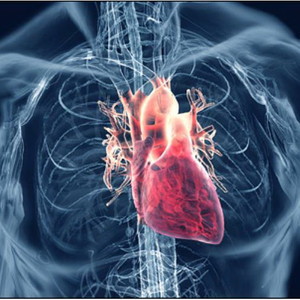 09:00 - 10:30Abstract session XII: AAA
09:00 - 10:30Abstract session XII: AAA Hall: Mediteranean
2. A systematic review on management of concomitant abdominal aortic aneurysm and colorectal cancer, G. KOuvelos (Greece)
3. Are evar studies fair to open surgery?, I. Lovricevic (Croatia)
4. Effects of atmospheric pressure dynamics and biometeorological phases on abdominal aortic aneurysm rupture onset, D. Opacic (Netherlands)
5. Intraspinal pressure changes after aortic aneurysm repair mapped by quantification of the optic sheath diameter, S. LUnz (Germany)
6. Open repair of aaa in a high volume centre, P. Mutavdzic (Serbia)
7. Open repair of ruptured abdominal aortic aneurysm in modern era: a twenty years experience of a high-volume centre, I. Tomic (Serbia)
8. Analysis of renal function after thoracoabdominal aortic aneurysm repair with branched evar, B. Cucuruz (Germany)
9. Aorto-uni-iliac stent-grafting without synchronous femoro-femoral bypass for the endovascular repair of abdominal aortic aneurysms in patients with contralateral iliac occlusion, K. Parazoglou (Greece)
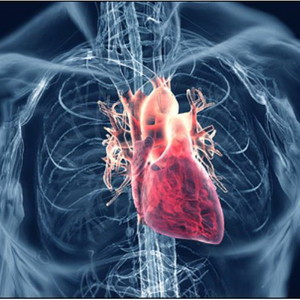 09:00 - 10:30Cardiovascular Resident Forum
09:00 - 10:30Cardiovascular Resident Forum Hall: Aegan
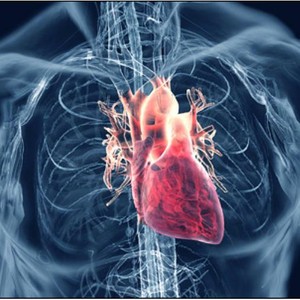 10:15 - 13:30VASCULAR SYPMOSIUM: AAA
10:15 - 13:30VASCULAR SYPMOSIUM: AAA Hall: Pacific
VOTING
Cardiac program
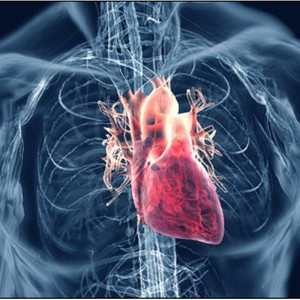 08:30 - 10:30SYMPOSIUM: CARDIOVASCULAR ANESTHESIA & CRITICAL CARE
08:30 - 10:30SYMPOSIUM: CARDIOVASCULAR ANESTHESIA & CRITICAL CARE Hall: Pacific
1. Monitored Anesthesia Care for EVAR: Less is more E. Arnaoutoglou (Greece)
 09:00 - 11:00Abstract session VIII: CONGENITAL HEART DISEASE
09:00 - 11:00Abstract session VIII: CONGENITAL HEART DISEASE 2. Tricuspid valve surgery after previous radical correction of “blue” congenital heart defects, M. Saidov (Russian Federation)
3. Fontan operation with simultaneous atrioventricular valve replacement: institutional experience, D. Kovalev (Russian Federation)
4. Late reoperations after arterial switch operation for complex congenital heart disease correction, T. Danilov (Russian Federation)
5. Results of surgical treatment for neonatal aortic coarctation, V. Milovanovic (Serbia)
6. Tricuspid valve repair after previous radical correction of septal congenital heart defects, M. Saidov (Russian Federation)
7. Surgical outcome in complex double outlet right ventricle with complete atrioventricular canal defect: 15 years of experience from a single center, S. Zhang (China)
8. Valve replacement in the pediatric population – our experience, M. Stajevic (Serbia)
9. Outcomes following surgical ligation of patent ductus arteriosus in premature infants, V. Milovanovic (Serbia)
10. Comparative results of aortic valve replacement with and without Manouguian technic in adolescents with «normal» aortic annulus, V. Mataev (Russian Federation)
11. Treatment of pediatric patients with vascular anomalies causing airway obstruction, I. Sehic (Serbia)
12. Early surgery to the patients diagnosed with patent ductus arterious, E. Ege (Turkey)
13. Critical paediatric aortic stenosis with depressed left ventricular function: hybrid balloon valvuloplasty through the ascending aorta via sternotomy, K. Ma (China)
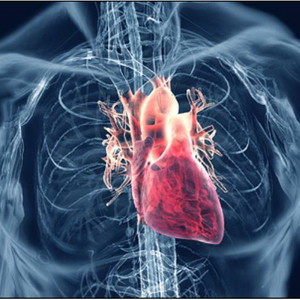 09:00 - 10:30Abstract session IX: AORTIC SURGERY
09:00 - 10:30Abstract session IX: AORTIC SURGERY Hall: Atlantic II
2. Comparison of left venticular apex versus other arterial cannulation sites for the operative management of acute type A aortic dissection, P. Vukovic (Serbia)
3. Valve Sparing Aortic Root Surgery Via Aortic Root Remodeling with External Root Annuloplasty: Preliminary Results In A Single Institution, N. C. Villamucho (Philippines)
4. Associated Djumbodis Aortic System Versus Conventional Surgery in Type a Dissection, C. Thierry (FRance)
5. 5 Years (2011 – 2015) Results of Type A Dissecting Aortic Aneurysms Surgical Treatment, V.I. Kravchenko (Ukraine)
6. The Safety of Intermittent Deep Hypothermic Circulatory Arrest in Low-Volume Center, K. Mershin (Russian Federation)
7. Ascending aortic repair with supra-aortic bypass for acute type A aortic dissection, H. Kitahara (Japan)
8. Impact of Mesenteric Ischemia in Patients with TypeA Acute Aortic Dissection, G.R. Carmen (Romania)
9. Frozen elephant trunk in chronic aortic disease: what device for which patient?, V. G. Ruggieri (France)
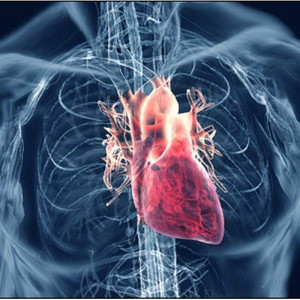 09:00 - 10:30Abstract session X: CORONARY SURGERY II
09:00 - 10:30Abstract session X: CORONARY SURGERY II Hall: Baltic
2. Outcomes of On-pump Beating Heart versus Traditional On-Pump Coronary Artery By-Pass Grafting Surgey in end-stage renal disease patients, Ö. F. Doğan (Turkey)
3. A New Surgical Approach to Internal Thoracic Artery Spasm Treatment Using the Radial and Gastroepiploic Arteries during Coronary Artery Bypass Graft, Ö. F. Doğan (Turkey)
4. Investigation of the vasorelaxant effects of moxonidine and its relaxation mechanism on the human radial artery when used as a coronary bypass graft, B. Saraç (Turkey)
5. Is preoperative eosinopenia an independent predictor of early mortality for coronary artery bypass surgery?, Ö. Korkmaz (Turkey)
6. Heart string reduces stroke rate and enables complete revascularization in off pump coronary artery bypass graft surgery, D. Odavic (Switzerland)
7. Successful surgical revascularization strategy in a patient with serious left main coronary artery disease and low ejection fraction in third hour of myocardial infarction with on going chest pain, U. Yetkin (Turkey)
8. Should We Wait 5 Days After Discontinuation of Dual Antiplatelet Therapy in Patients Who Need Urgent Coronary artery bypass grafting, S. KAcar (Serbia)
9. A Journey of a Thousand Miles Begins with a Single Step, I. Bilbija (Serbia)
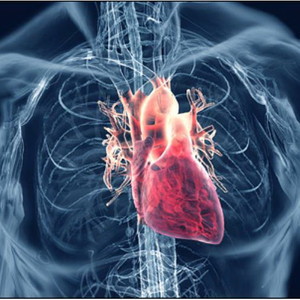 09:00 - 10:30Cardiovascular Resident Forum
09:00 - 10:30Cardiovascular Resident Forum 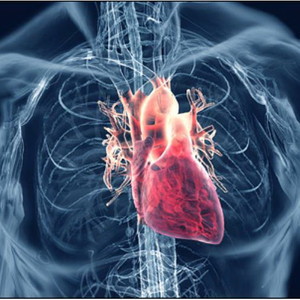 10:45 - 12:45Abstract session XI: MISCELANEOUS II
10:45 - 12:45Abstract session XI: MISCELANEOUS II Hall: Atlantic II
1. Do surgical techniques make a difference in the treatment of tricuspid valve endocarditis in intravenous drug addicts?, R. Guo (United Kingdom)
2. Performance of EuroSCORE 2 and logistic EuroSCORE in patients with native valve endocarditis, D. Unic (Croatia)
3. One year follow up in patients who underwent myectomy due to septal hypertrophy, F. López Valdiviezo (Spain)
4. Utilizing topical negative pressure in treatment of posternotomy wounds, F. Rudman (Croatia)
5. Computed tomography fistulography as a tool for planning treatment of sternal osteomyelitis, F. Rudman (Croatia)
6. Validation of EuroSCORE II performances on a single-centre, contemporary cardiac surgery cohort of 5732 patients, D. Nezic (Serbia)
7. Predictive factors of 12-year survival following valve surgery for infective endocarditis, C. Corazzari (Italy)
8. The “Jung” variable as predictor of in-hospital outcome in patients presenting with acute st elevated myocardial infarction after primary percutaneous coronary intervention, M. Sladojevic (Serbia)
9. Impact of negative blood cultures on outcome after surgery for acute infective endocarditis, E.Sportelli (Italy)
Bilateral Talks
- Participants0
- Meetings Requested0
- Meetings Accepted0
Participants
-
 Afghanistan 3
Afghanistan 3 -
 Albania 2
Albania 2 -
 Armenia 1
Armenia 1 -
 Austria 5
Austria 5 -
 Azerbaijan 5
Azerbaijan 5 -
 Belarus 1
Belarus 1 -
 Belgium 4
Belgium 4 -
 Bosnia-Herzegovina 18
Bosnia-Herzegovina 18 -
 Brazil 7
Brazil 7 -
 Bulgaria 5
Bulgaria 5 -
 Canada 1
Canada 1 -
 China 3
China 3 -
 Congo-Kinshasa(Zaire) 3
Congo-Kinshasa(Zaire) 3 -
 Croatia 24
Croatia 24 -
 Czech Republic 7
Czech Republic 7 -
 Egypt 9
Egypt 9 -
 Estonia 1
Estonia 1 -
 France 6
France 6 -
 Germany 20
Germany 20 -
 Ghana 1
Ghana 1 -
 Greece 16
Greece 16 -
 Iran 2
Iran 2 -
 Italy 44
Italy 44 -
 Japan 10
Japan 10 -
 Kazakhstan 7
Kazakhstan 7 -
 Kuwait 1
Kuwait 1 -
 Macedonia 10
Macedonia 10 -
 Malta 4
Malta 4 -
 Moldova 3
Moldova 3 -
 Montenegro 1
Montenegro 1 -
 Netherlands 6
Netherlands 6 -
 New Zealand 1
New Zealand 1 -
 Nigeria 7
Nigeria 7 -
 Norway 1
Norway 1 -
 Palestine 1
Palestine 1 -
 Philippines 1
Philippines 1 -
 Poland 11
Poland 11 -
 Portugal 3
Portugal 3 -
 Romania 21
Romania 21 -
 Russian Federation 42
Russian Federation 42 -
 Saudi Arabia 2
Saudi Arabia 2 -
 Serbia 104
Serbia 104 -
 Slovakia 6
Slovakia 6 -
 Slovenia 17
Slovenia 17 -
 South Korea 8
South Korea 8 -
 Spain 12
Spain 12 -
 Switzerland 4
Switzerland 4 -
 Taiwan 2
Taiwan 2 -
 Tunisia 4
Tunisia 4 -
 Turkey 37
Turkey 37 -
 Ukraine 9
Ukraine 9 -
 United Kingdom 12
United Kingdom 12 -
 USA 4
USA 4 -
 Uzbekistan 1
Uzbekistan 1 -
 Venezuela 1
Venezuela 1 - Total of Participants541
Profile views
- Before Event277940
- After Event119819
Important dates
- 18.01.2016.Deadline for ABSTRACT SUBMISSION01.01.2016End of EARLY BIRD REGISTRATION21.04.2016 - Congress
All pictures and ABSTRACT BOOK
 |
 |
 |
